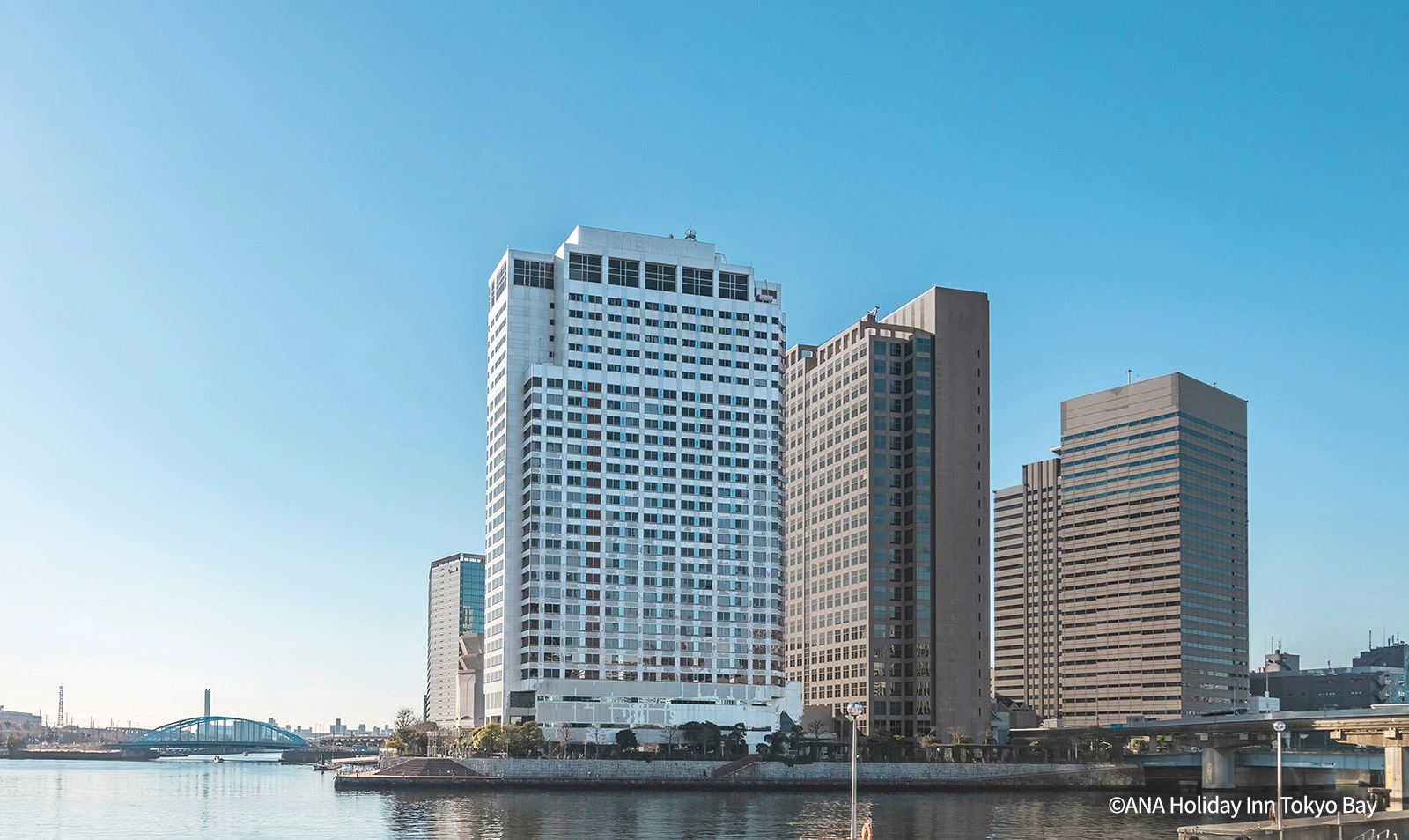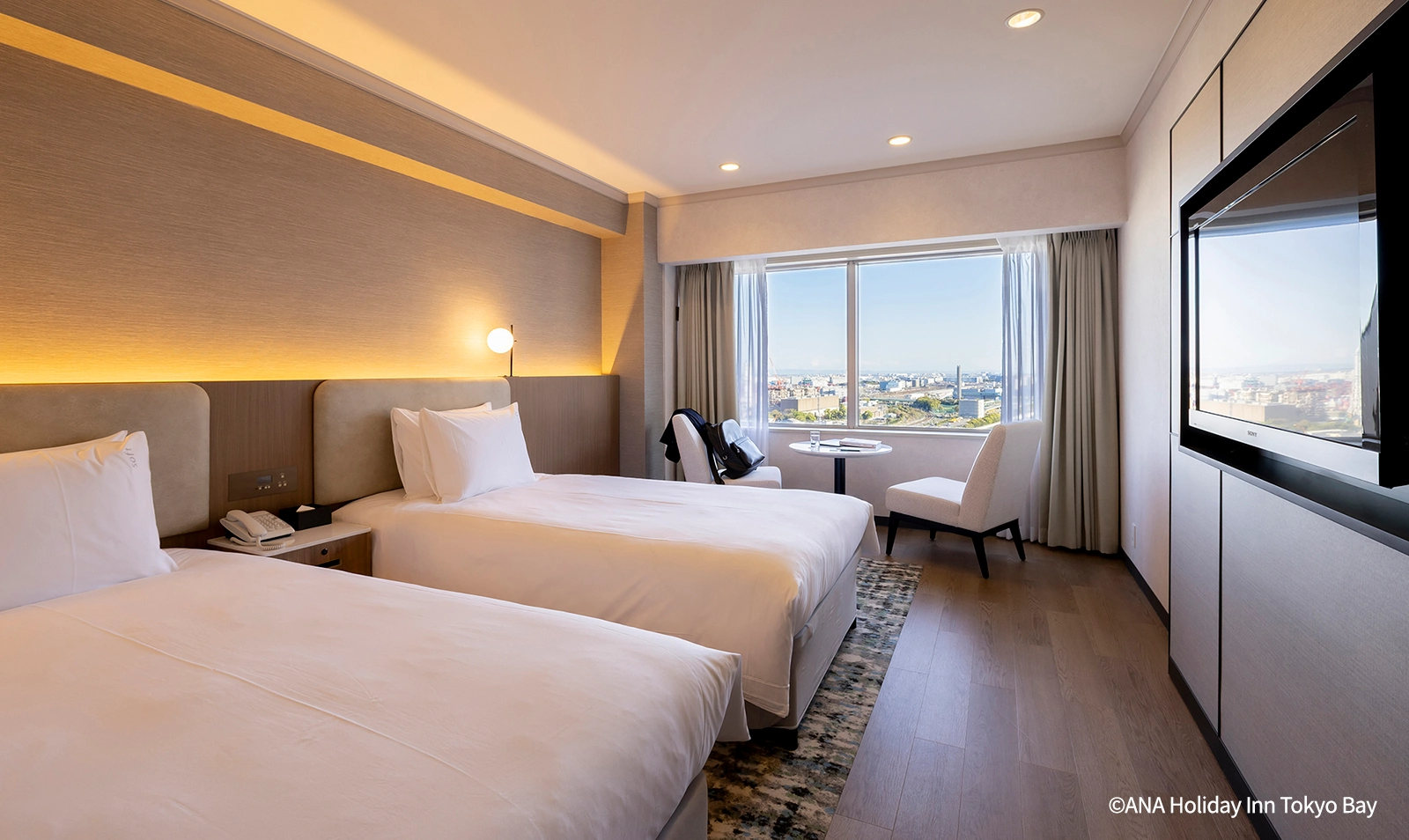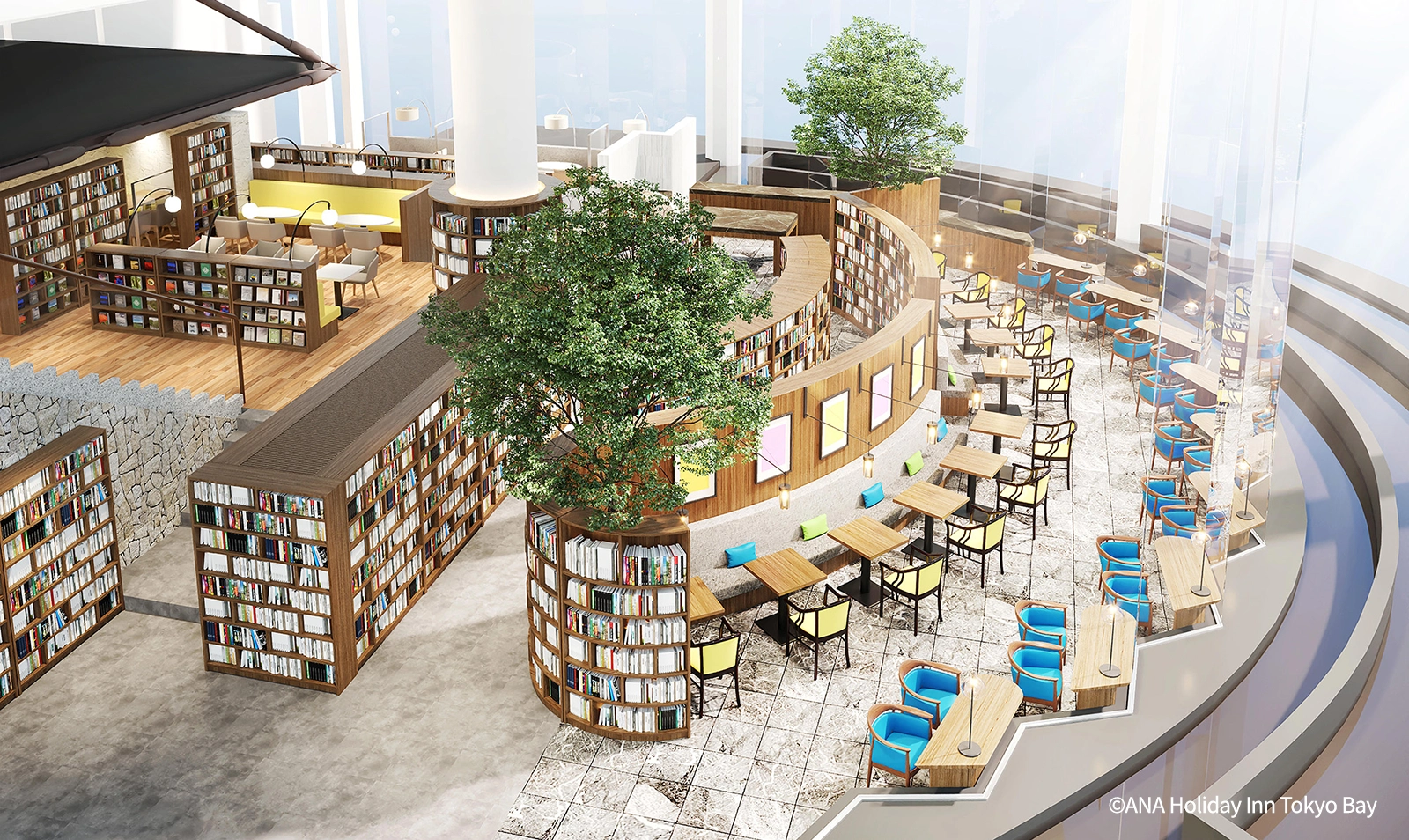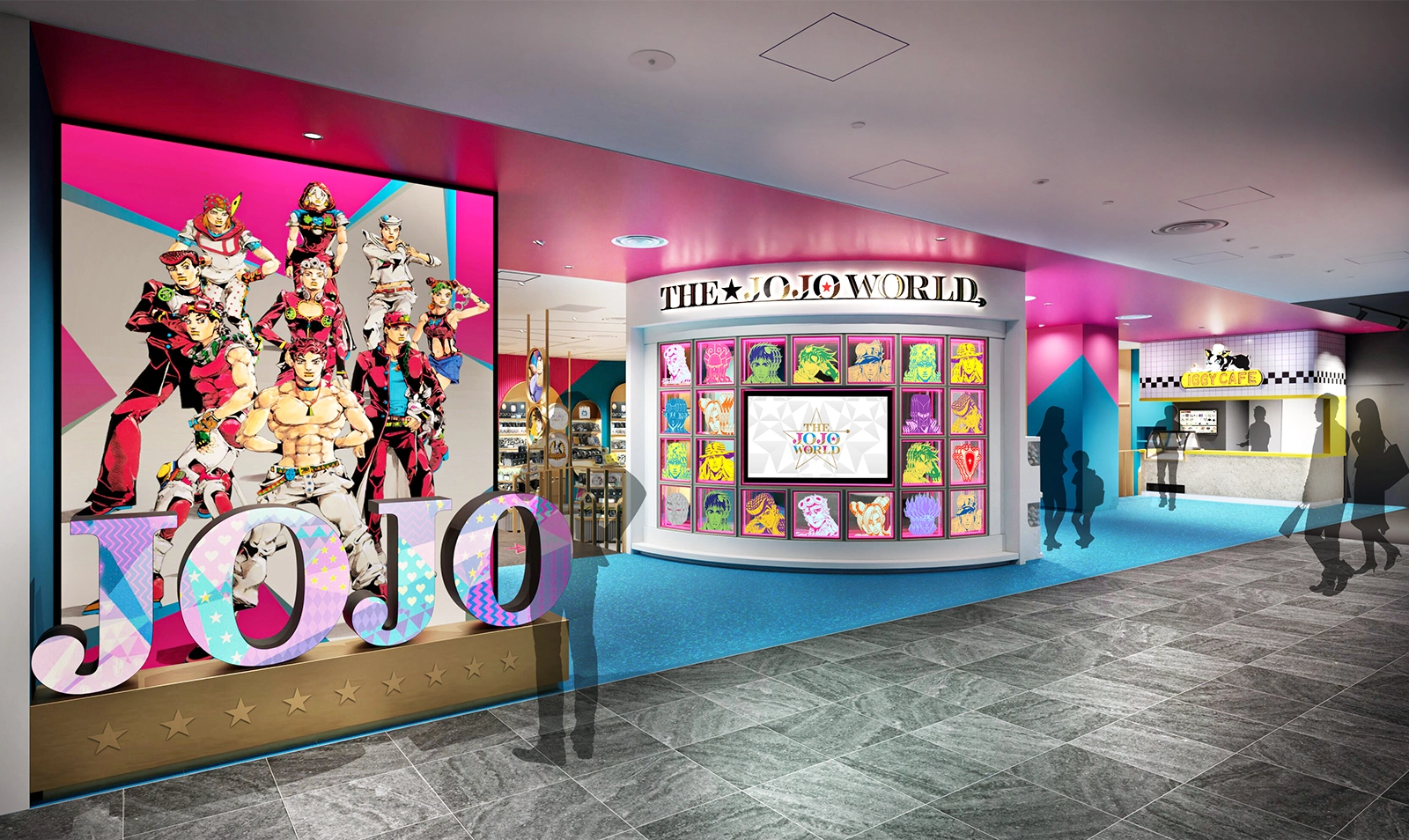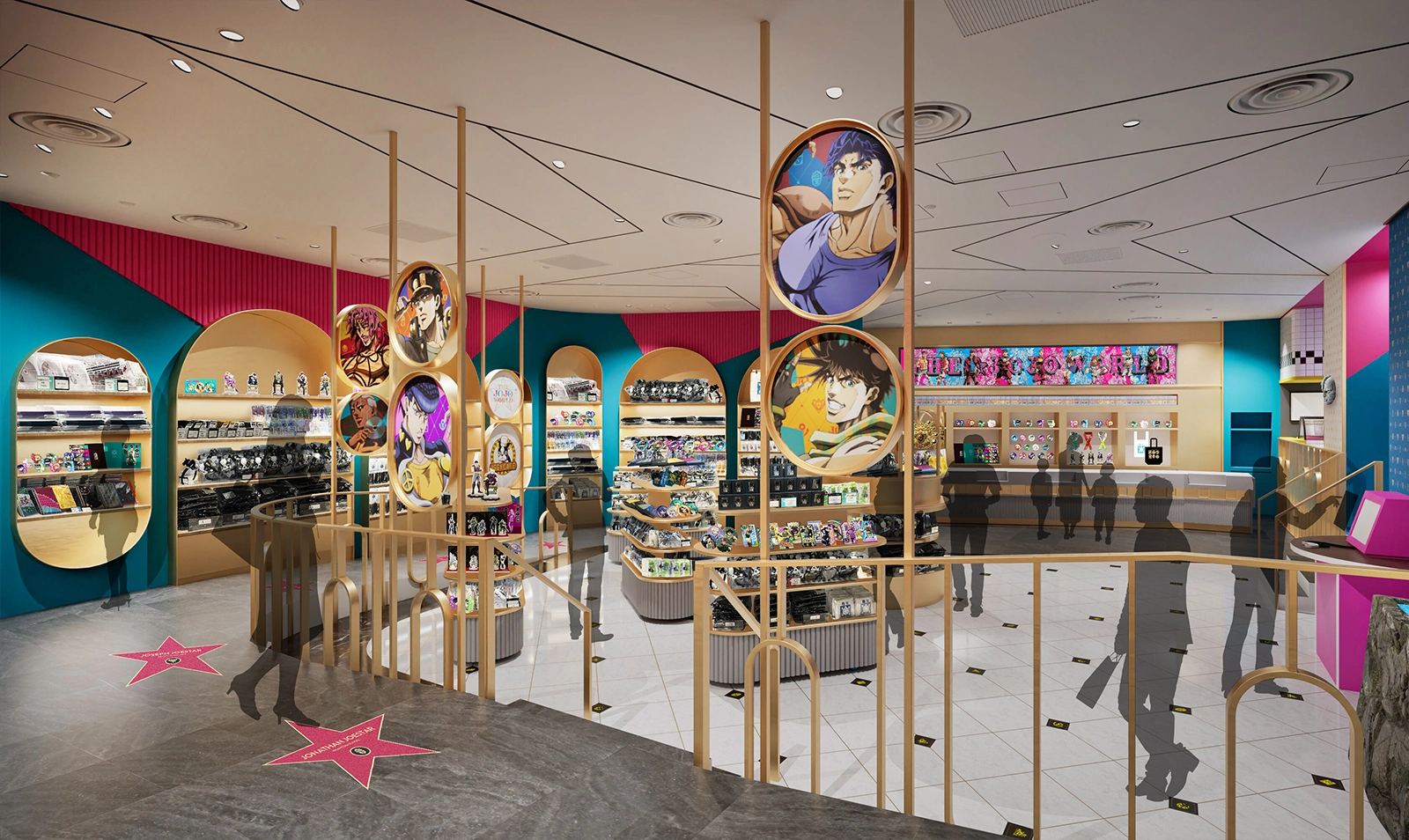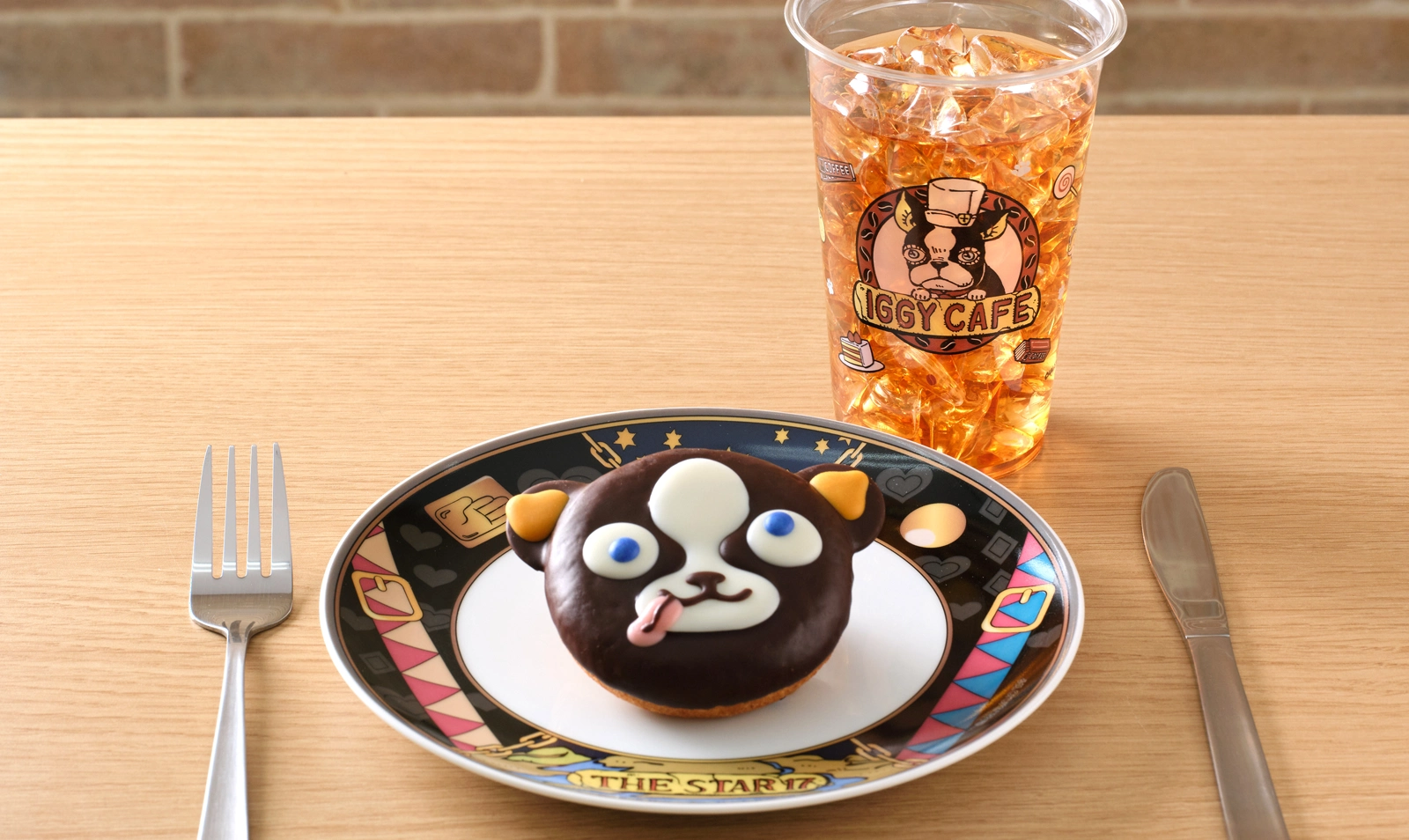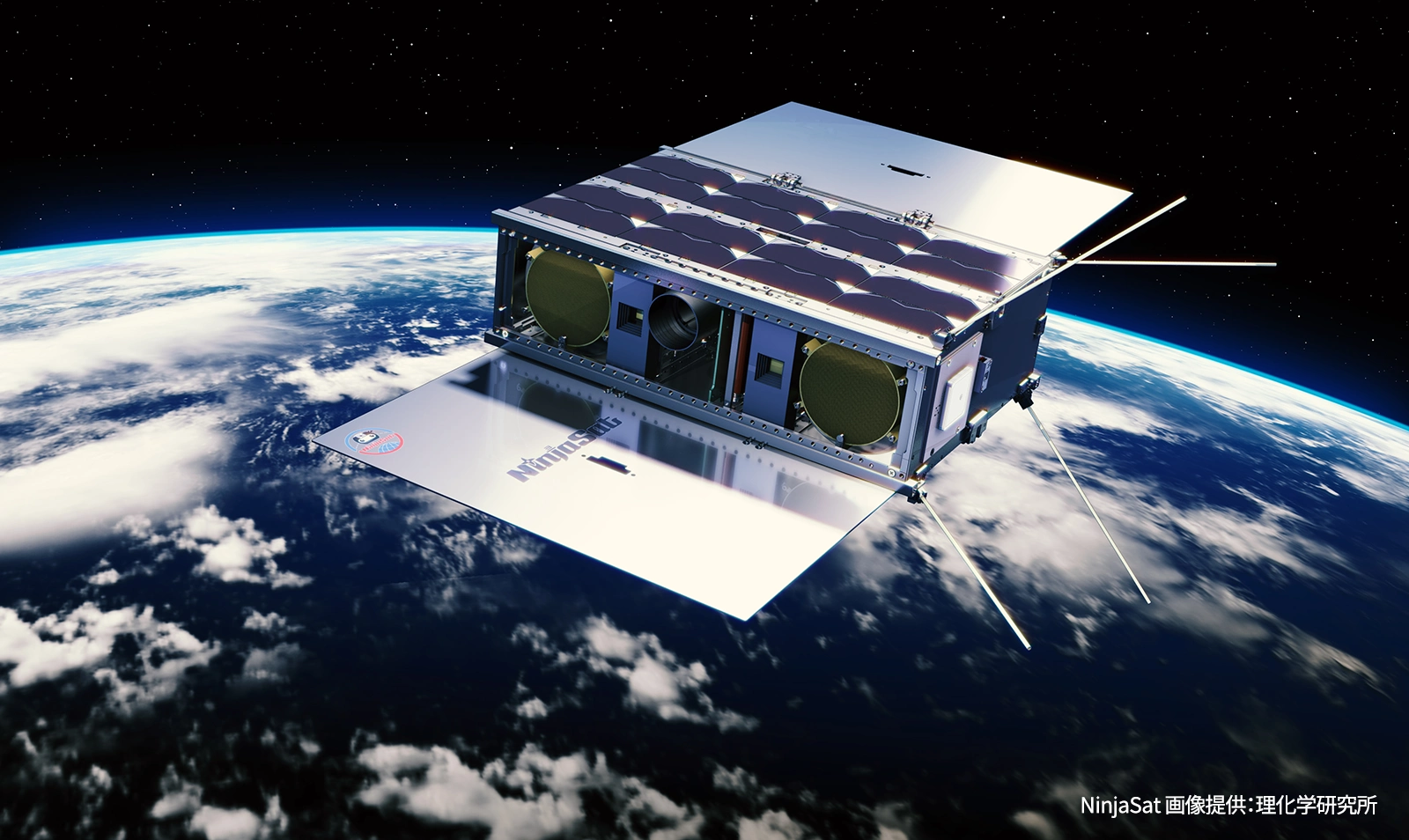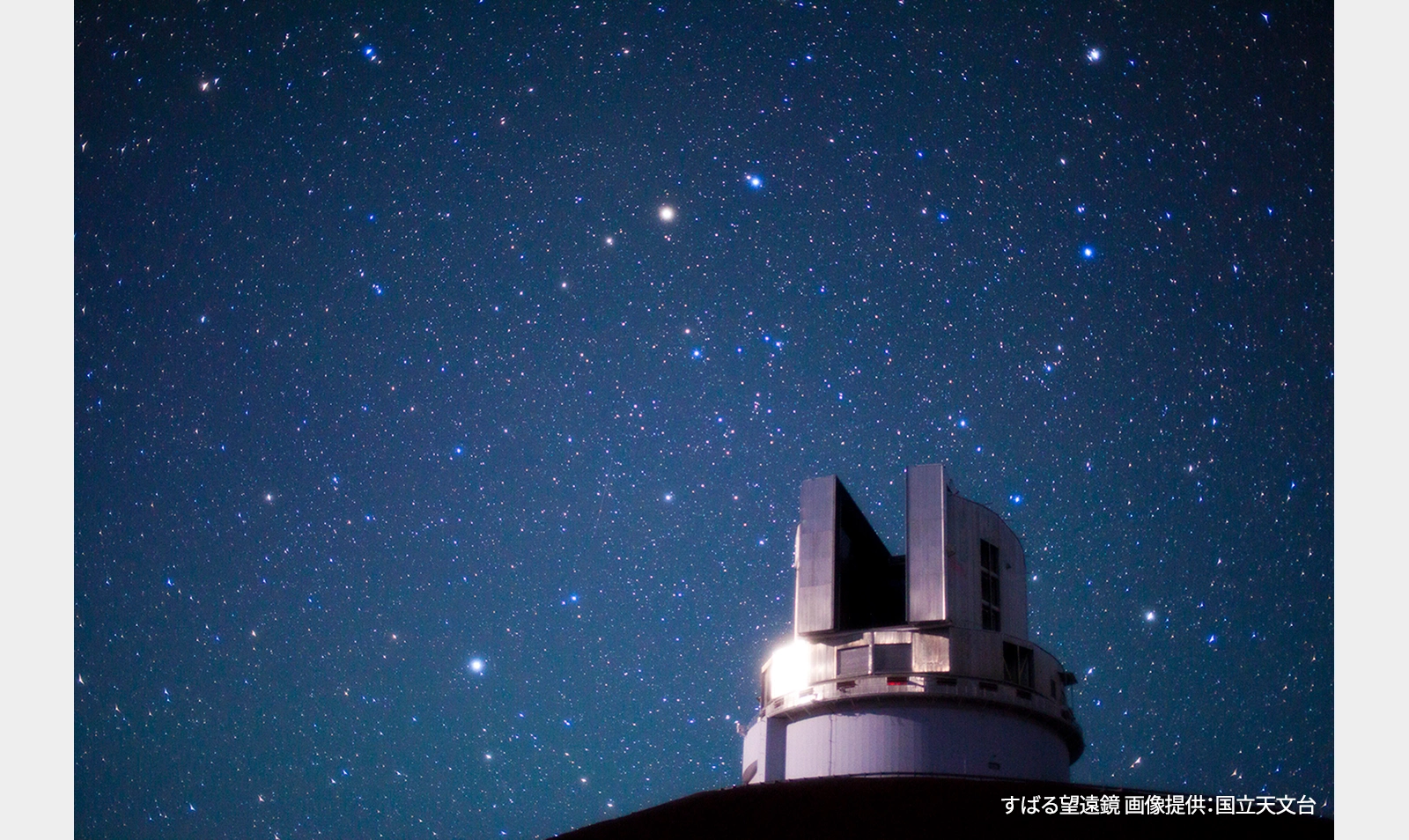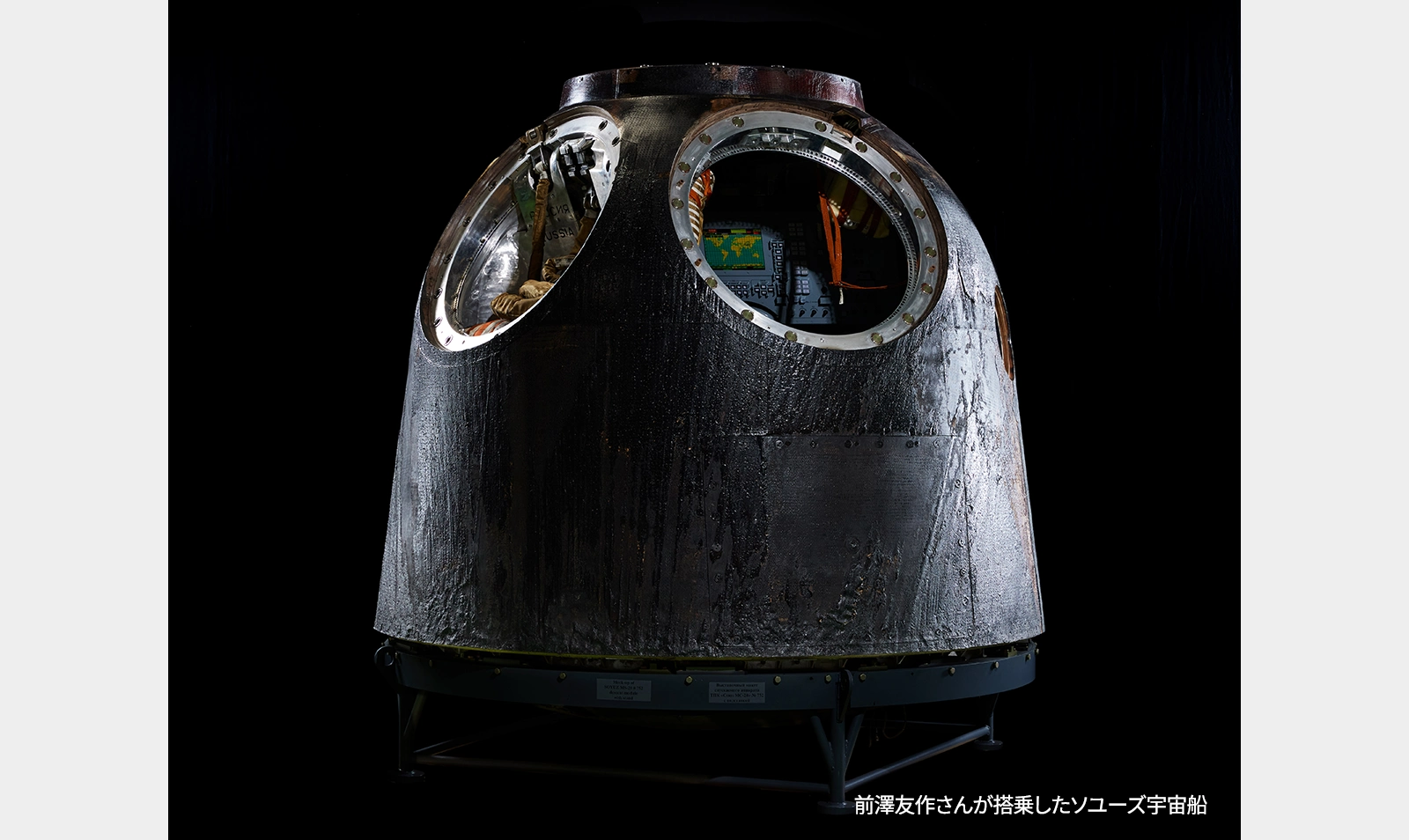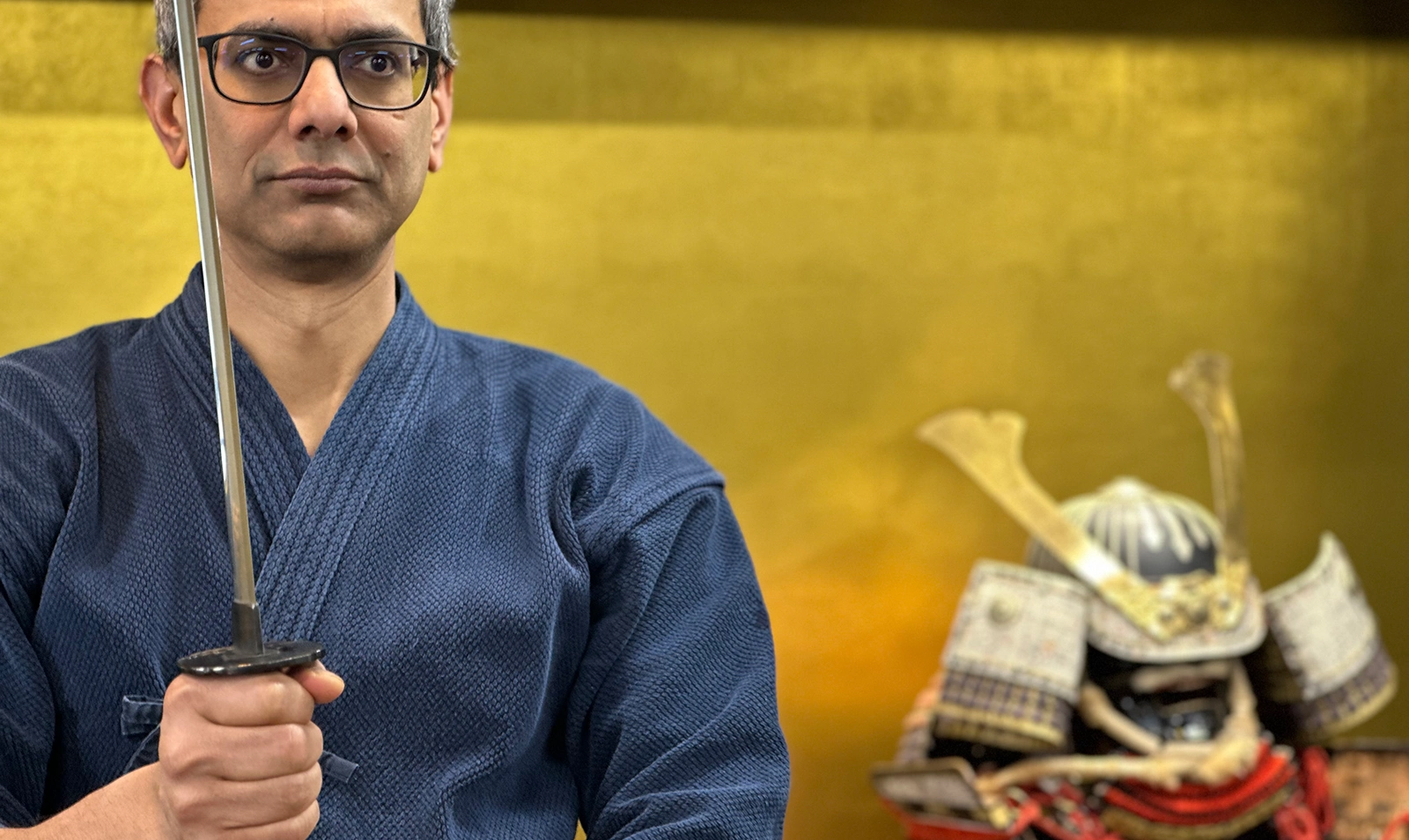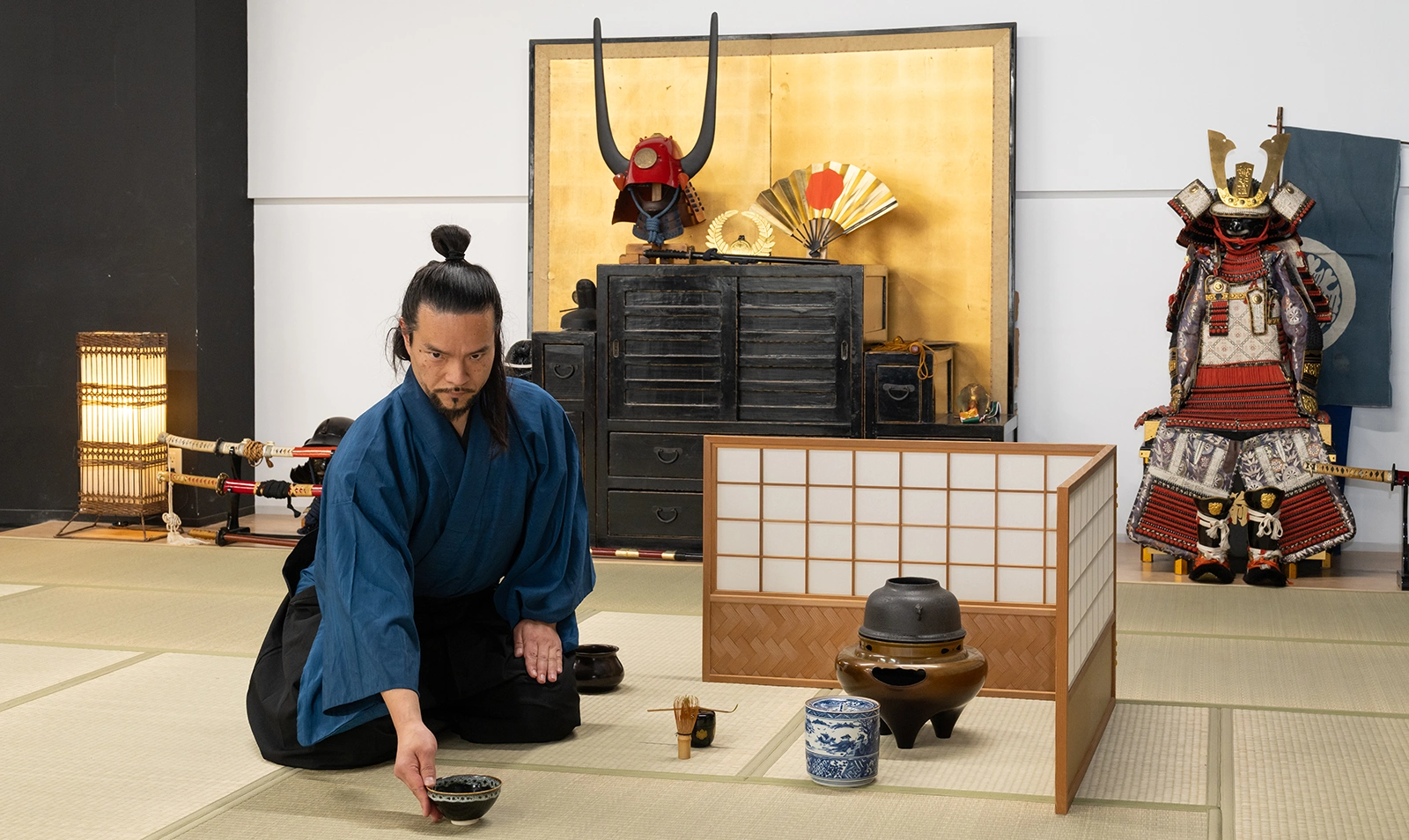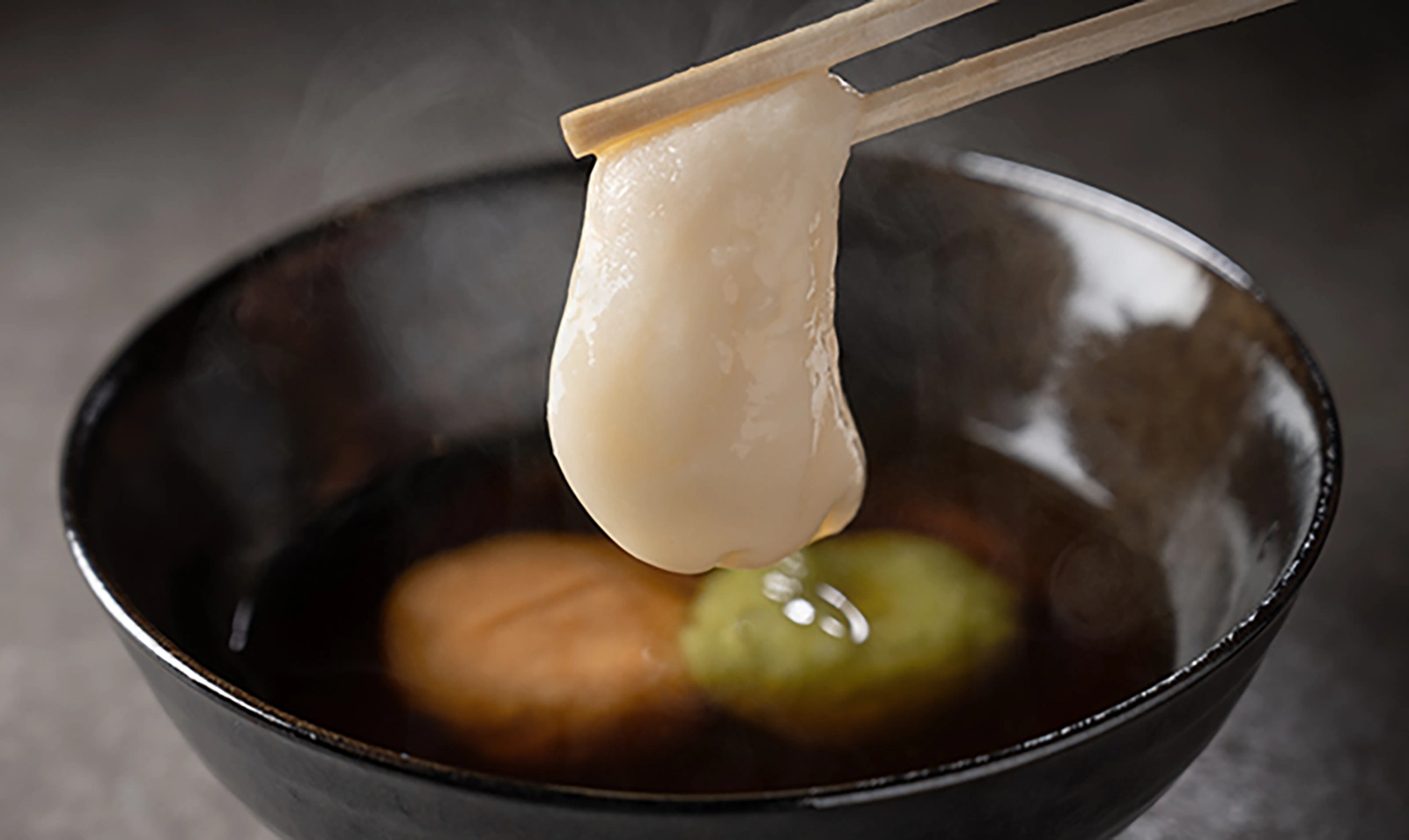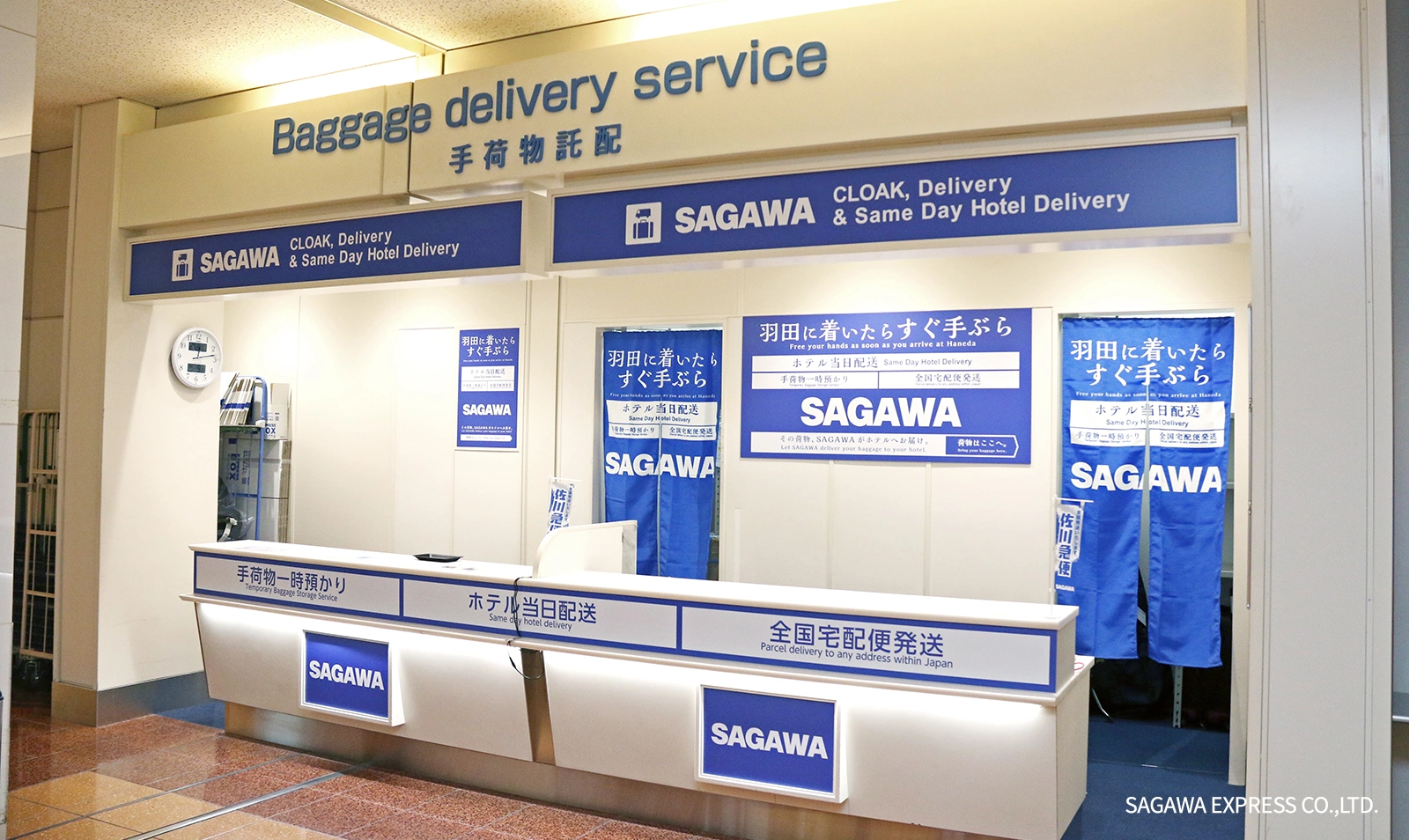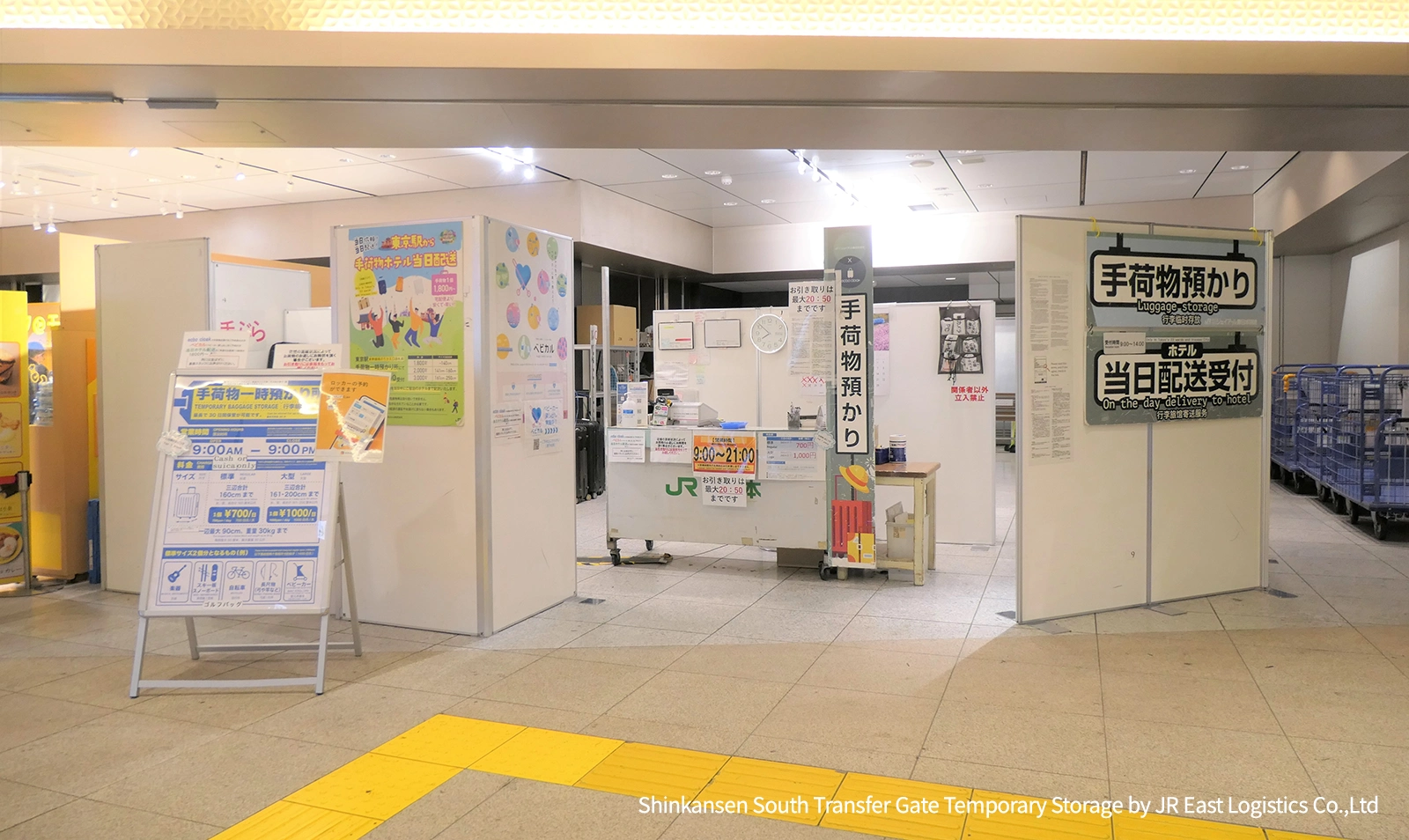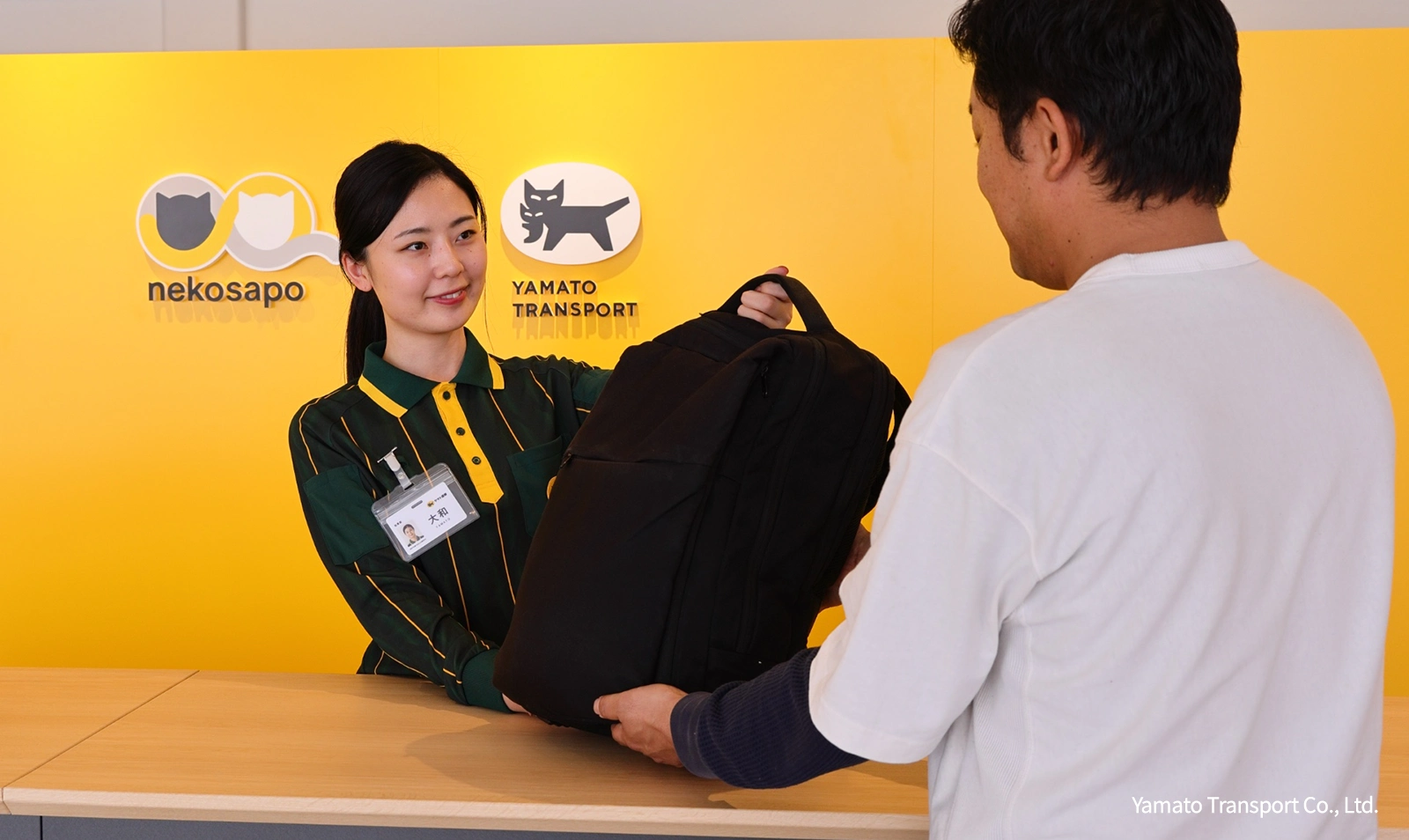Tokyo nature activities you can enjoy!
Subscribe Downloadindex
- NewsA large hotel opens with direct station access in the Bay Area
- NewsAn immersive JoJo experience shop now open
- NewsThe world’s first unveiling: a life-size model of the crewed pressurized lunar rover
- NewsEnter the world of SHOGUN at this cafe
- Seasonal TipsSummer’s the season for luggage-free travel
- Tokyo ReportTokyo nature activities you can enjoy!
News
A large hotel opens with direct station access in the Bay Area
April 24, 2025 Accommodation Tennozu (Tokyo Sta.→ 20 min by train / Shinjuku Sta.→ 25 min by train)
News
An immersive JoJo experience shop now open
July 24, 2025 Facility Shibuya (Tokyo Sta.→ 30 min by train / Shinjuku Sta.→ 6 min by train)
News
The world’s first unveiling: a life-size model of the crewed pressurized lunar rover
July 12 to September 28, 2025 Exhibition Odaiba (Tokyo Sta.→ 30 min by train / Shinjuku Sta.→ 40 min by train)Half a century after the Apollo mission, this exhibition offers a real sense that humanity now stands at the dawn of a new “space era.”
News
Enter the world of SHOGUN at this cafe
April 22, 2025 Facility Omotesando (Tokyo Sta.→ 20 min by train / Shinjuku Sta.→ 20 min by train)
Seasonal Tips
Summer’s the season for luggage-free travel
Summer Service“Hands-free” travel is a great way to make summer travel in Japan more comfortable, especially given the sudden changes in weather and intense heat. In Tokyo, trains are the most common way to get around, but stations tend to be crowded and have lots of stairs. To ease the difficulties of travel with large luggage, Japan’s delivery companies have counters at airports and stations offering the convenience of same-day luggage delivery services to your hotel. Terminal stations also provide temporary luggage storage. With just a little planning and preparation for the weather, your trip is sure to be much more comfortable and enjoyable.
Please visit the official websites below for more information.
SAGAWA Hands-Free travel
YAMATO TRANSPORT GLOBAL
JR East Logistics Baggage delivery (Japanese site only)
JR East Logistics Baggage storage (Japanese site only)
Tokyo Report
Tokyo nature activities you can enjoy!
What comes to mind when you hear, “Tokyo”? For many, it’s a skyline of skyscrapers, but did you know the city is also home to an abundance of natural beauty? Venture a bit outside the city center to discover the lush Tama area or islands surrounded by crystal clear seas. Even in the heart of the metropolis, you can kayak through canals and see Tokyo from a whole new angle. Here, we take a closer look at outdoor activities perfect to beat the heat and make the most of summer.
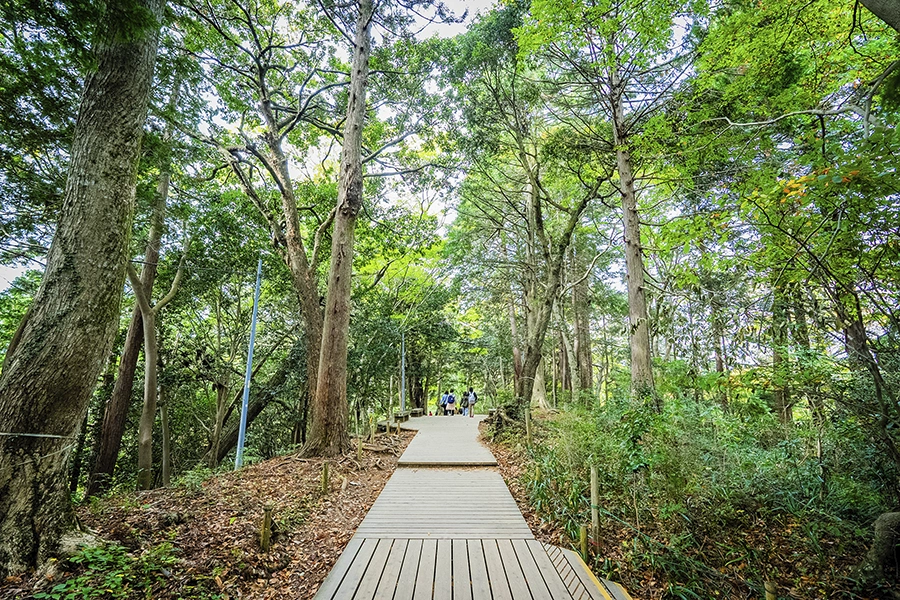
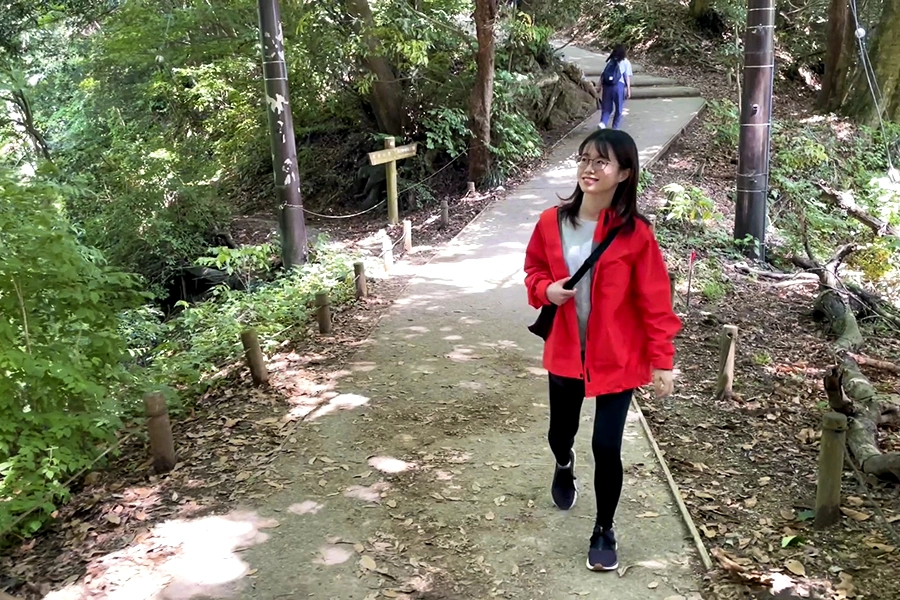
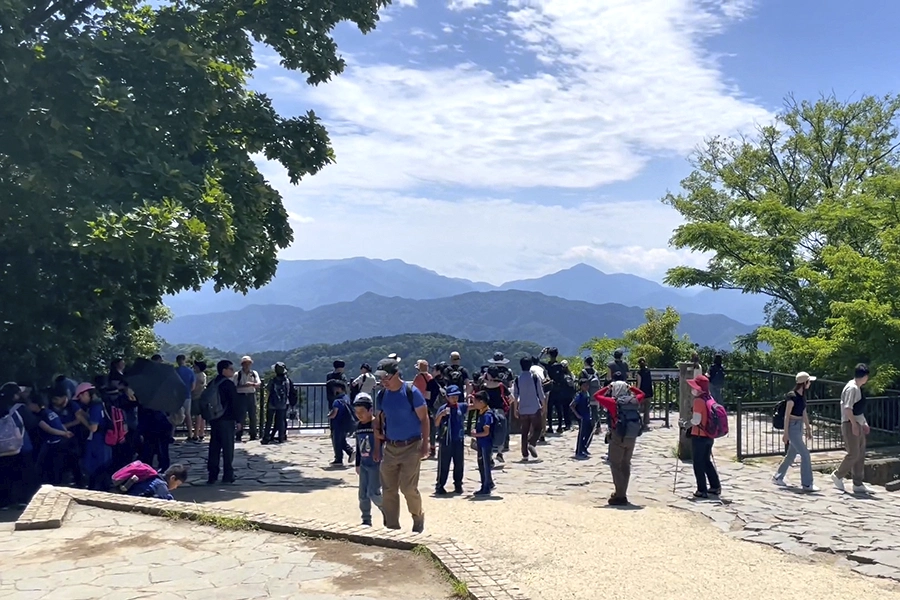
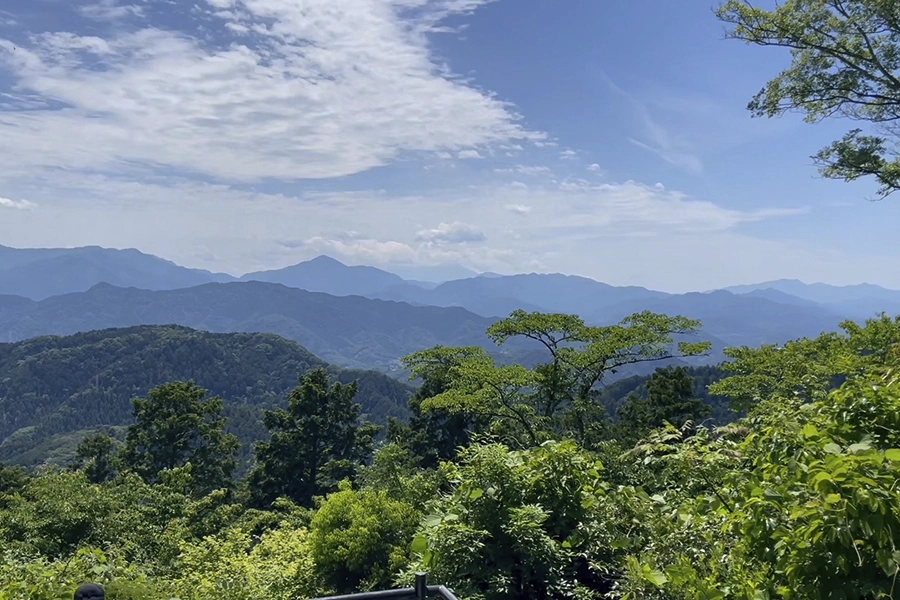
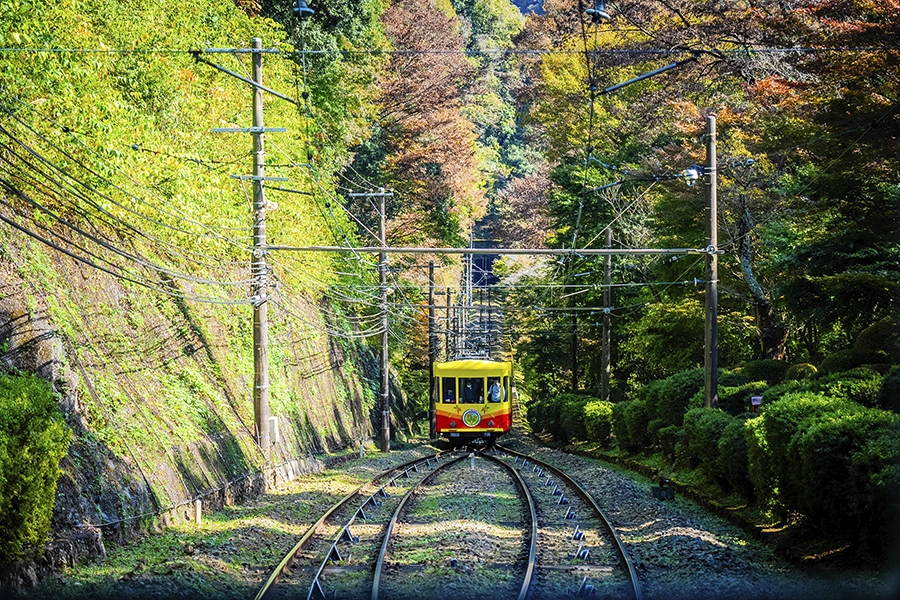 Mt. Takao rises 599 m tall in the Tama area of western Tokyo. This popular spot, awarded three stars in the Michelin Green Guide, boasts the world’s highest number of climbers! In addition to multiple hiking trails, Mt. Takao also offers cable cars and lifts, allowing everyone—from beginners to advanced climbers—to enjoy nature in a way that suits their level. To top it off, all of this is just an hour from the city center.
Mt. Takao rises 599 m tall in the Tama area of western Tokyo. This popular spot, awarded three stars in the Michelin Green Guide, boasts the world’s highest number of climbers! In addition to multiple hiking trails, Mt. Takao also offers cable cars and lifts, allowing everyone—from beginners to advanced climbers—to enjoy nature in a way that suits their level. To top it off, all of this is just an hour from the city center.
Takao Tozan Railway official site (Multiple languages available)
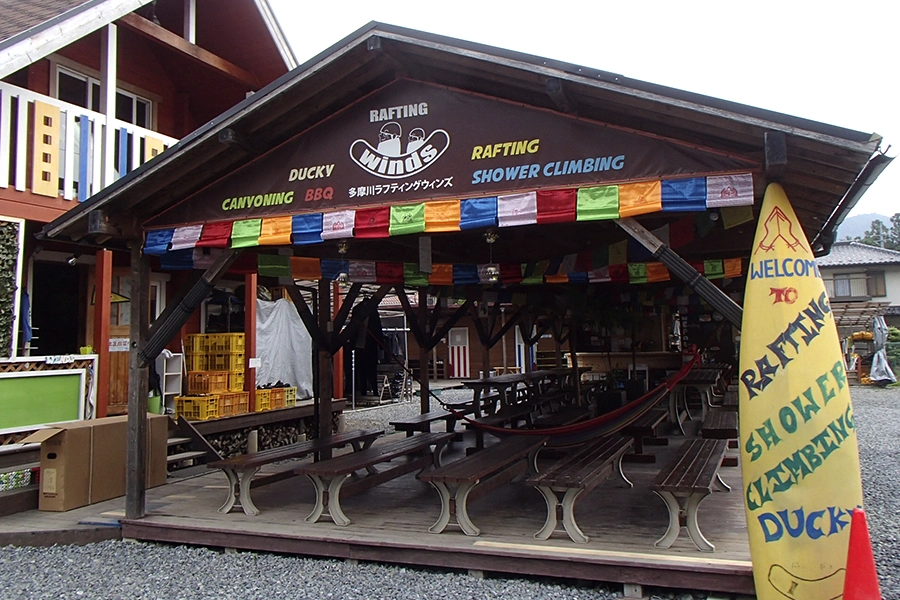
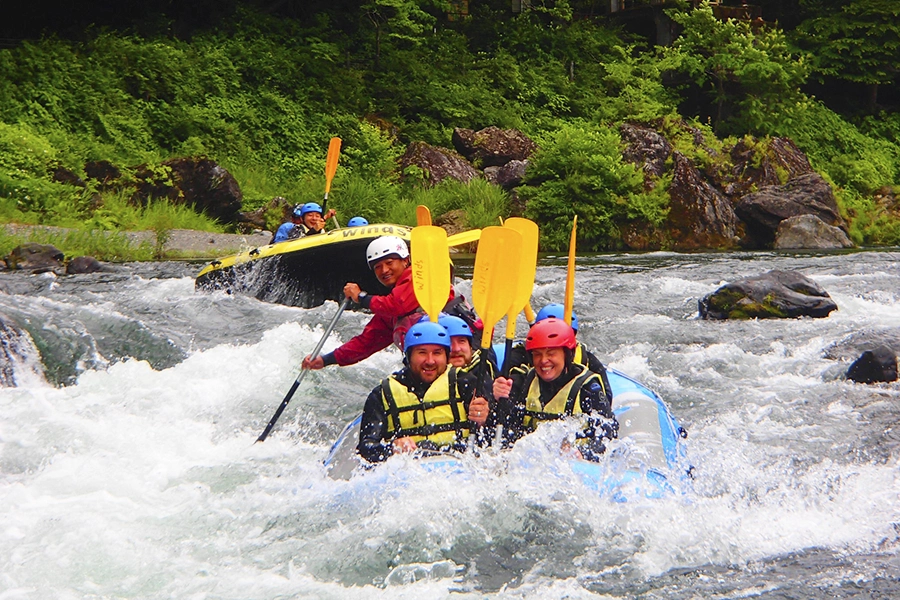
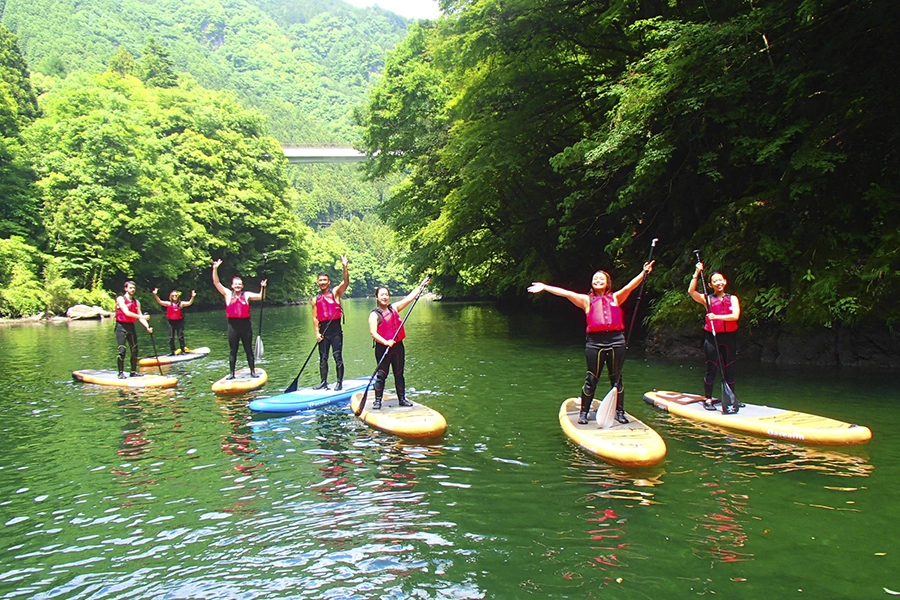
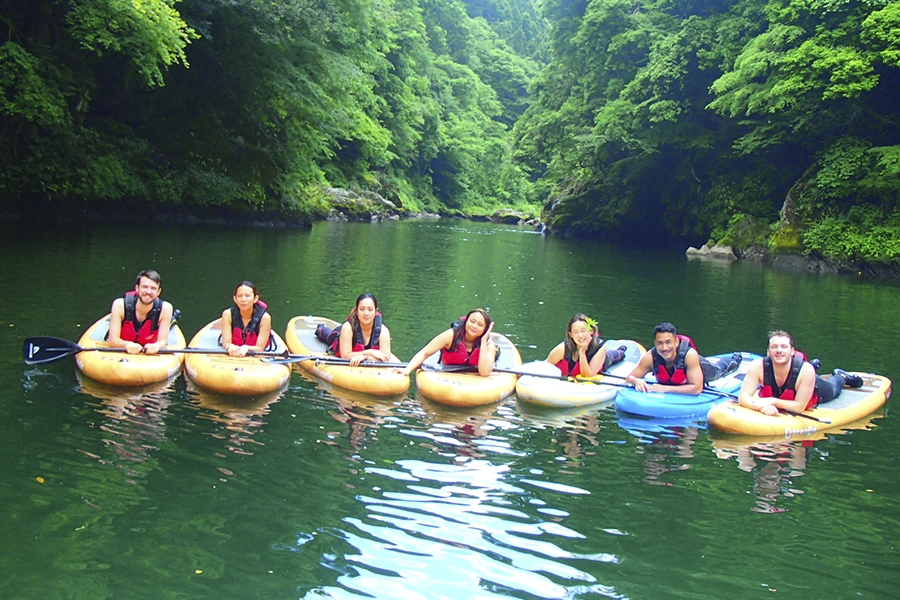
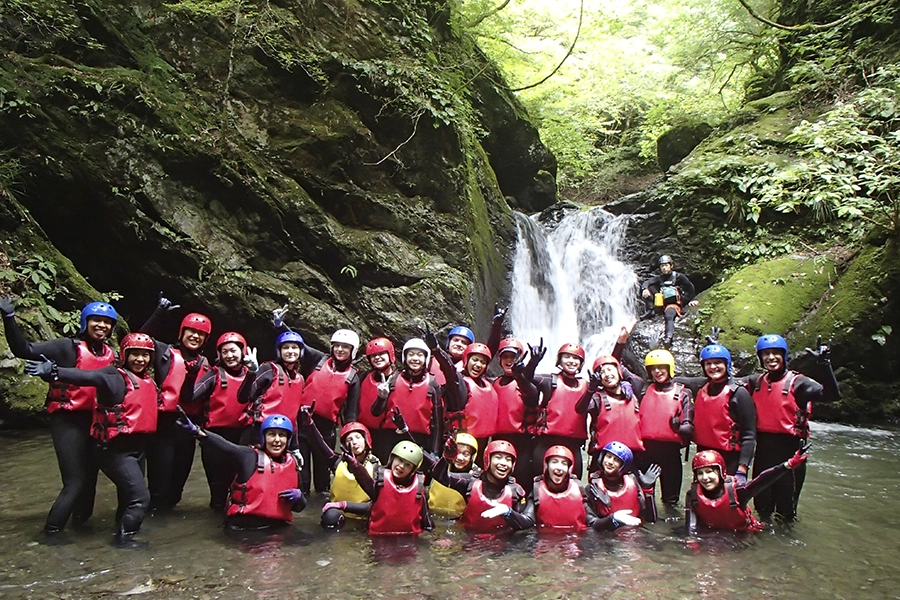 A roughly 1.5 to 2-hour local train ride from the city center, the Okutama area lies deep in a mountainous area mostly designated as a national park. Enjoy a variety of activities amid majestic natural scenery so lush it's hard to believe you're in Tokyo.
A roughly 1.5 to 2-hour local train ride from the city center, the Okutama area lies deep in a mountainous area mostly designated as a national park. Enjoy a variety of activities amid majestic natural scenery so lush it's hard to believe you're in Tokyo.
The Tama River runs through the area, making a wealth of water-based adventures possible, including rafting, stream climbing, or drifting on a SUP on a dam lake. Rafting Winds offers a “combo tour” to bundle two activities for one full day of nonstop fun in the pristine waters.
Rafting winds
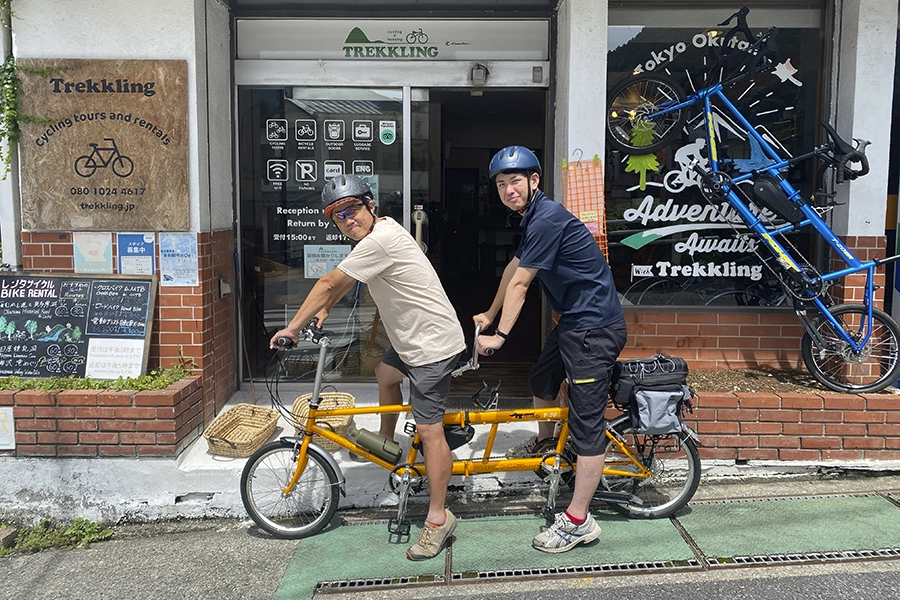
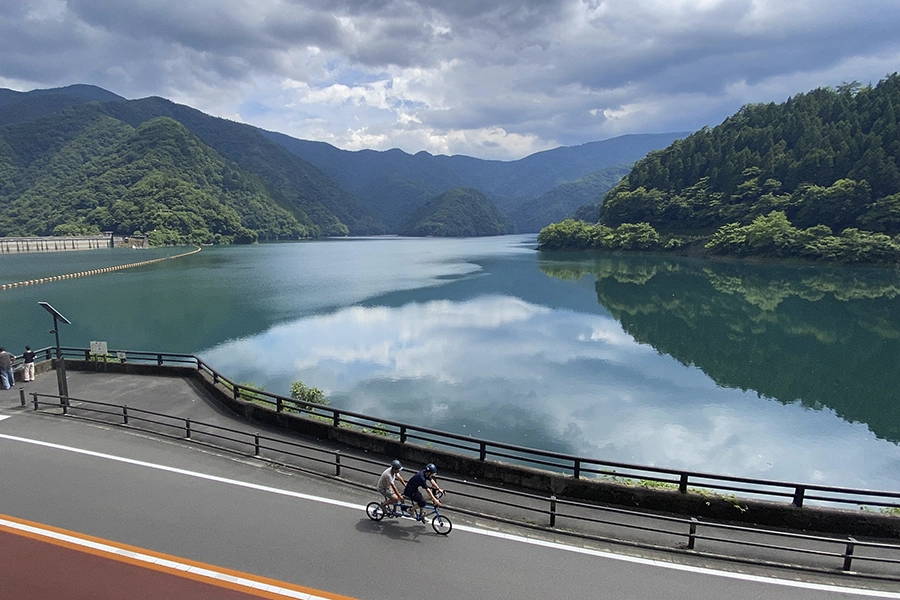
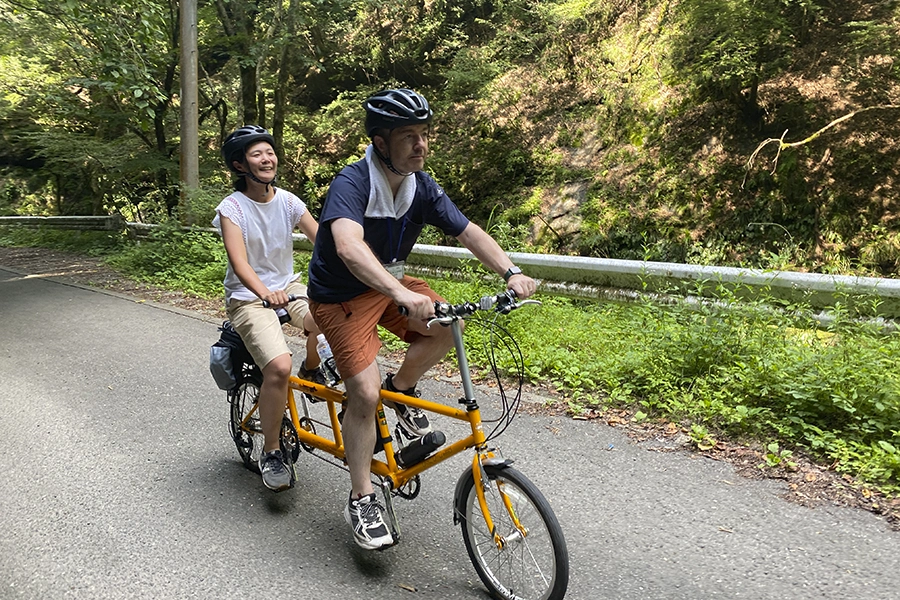
 Cycling is a great way to explore the ecosystem along the valley. The shop “Trekkling” in front of Okutama Station offers bicycle rentals and cycling tours. You can choose the right bicycle for your level, from electric-assist bikes for beginners to fully equipped mountain bikes for hardcore cyclists.
Cycling is a great way to explore the ecosystem along the valley. The shop “Trekkling” in front of Okutama Station offers bicycle rentals and cycling tours. You can choose the right bicycle for your level, from electric-assist bikes for beginners to fully equipped mountain bikes for hardcore cyclists.
TREKKLING
English-speaking staff are available at both locations, ensuring smooth communication.
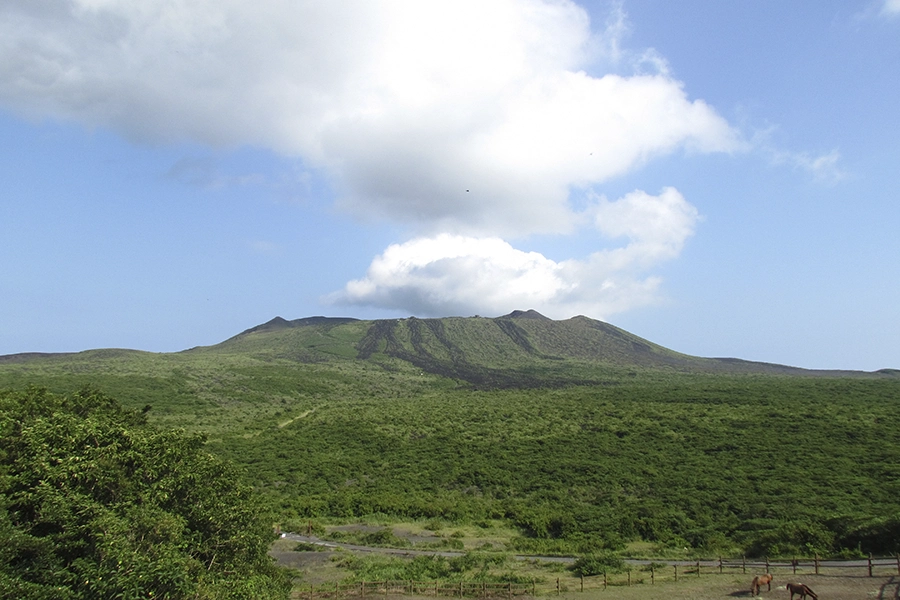
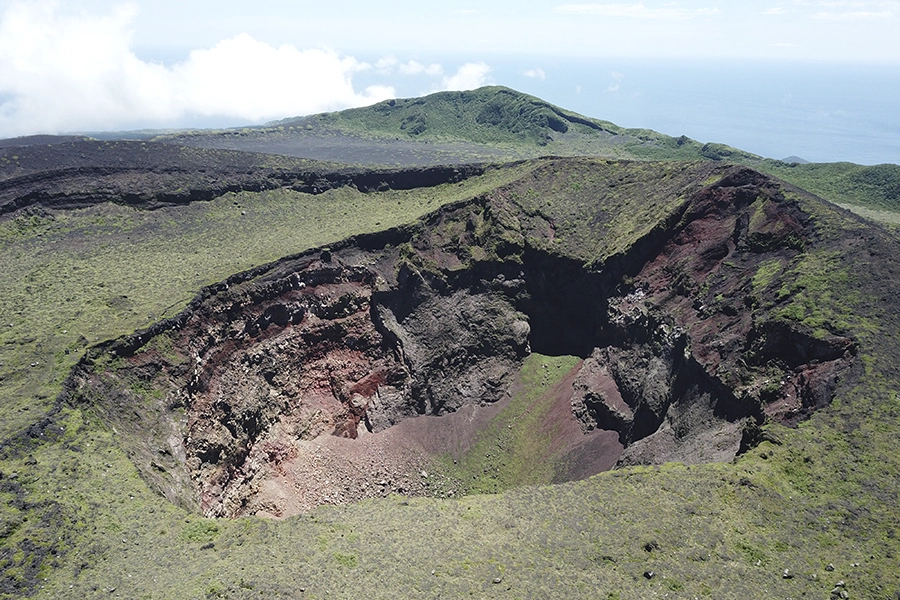
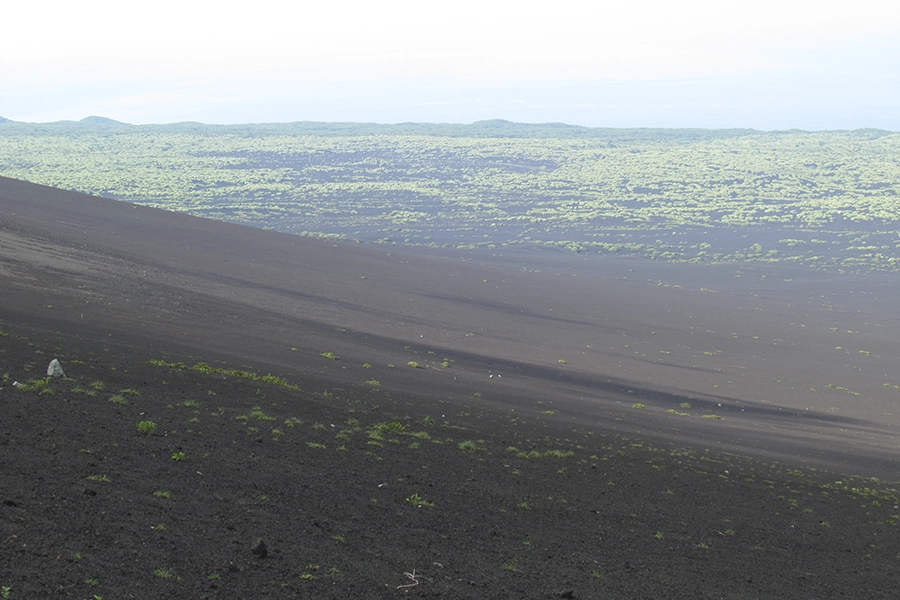
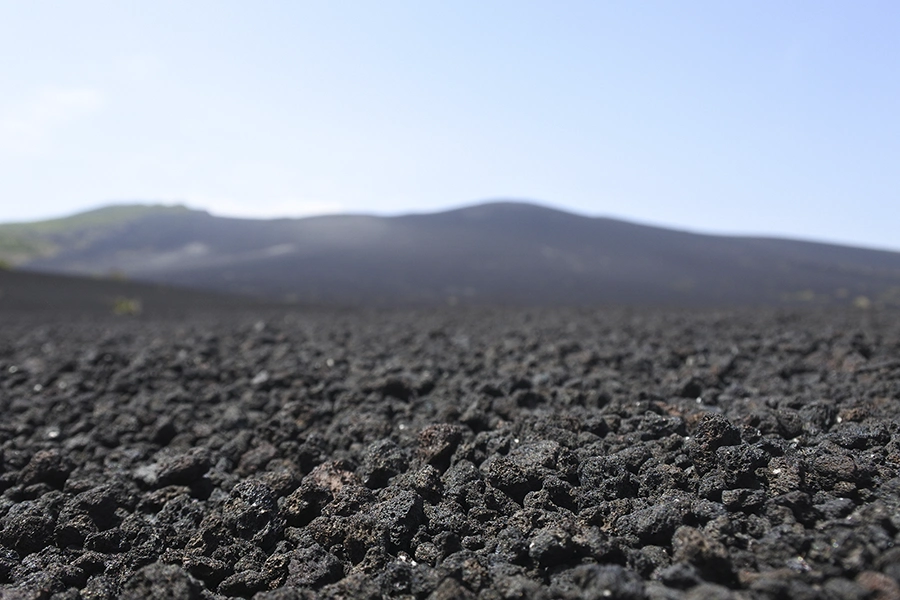 Oshima is the largest of the Izu Islands, located about 120 km south of central Tokyo. At its center stands Mt. Mihara, an active volcano rising 758 meters tall, also revered as a deity known as Gojinkasama. A hike through the area provides an up-close look of the dynamic landscape shaped by past eruptions, including a crater over 300 meters wide at the volcano’s summit. Another must-see on the mountain’s northeast side is the Ura-Sabaku Desert. The lunar-like surface blanketed in black volcanic ash and scoria leaves a lasting impression.
Oshima is the largest of the Izu Islands, located about 120 km south of central Tokyo. At its center stands Mt. Mihara, an active volcano rising 758 meters tall, also revered as a deity known as Gojinkasama. A hike through the area provides an up-close look of the dynamic landscape shaped by past eruptions, including a crater over 300 meters wide at the volcano’s summit. Another must-see on the mountain’s northeast side is the Ura-Sabaku Desert. The lunar-like surface blanketed in black volcanic ash and scoria leaves a lasting impression.
There are three ways to reach Oshima from Tokyo. You can fly from Chofu Airport in about 30 minutes. If traveling by sea, you can choose either a 1 hour 45-minute jetfoil ride from Takeshiba Pier, or an 8-hour overnight journey on a large passenger ferry.
Oshima Navi (Japanese site only)



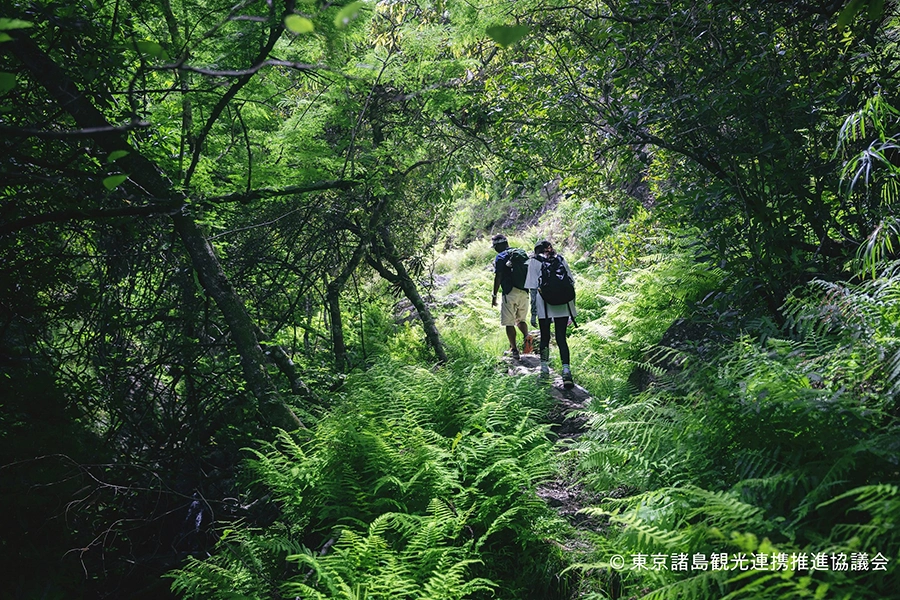
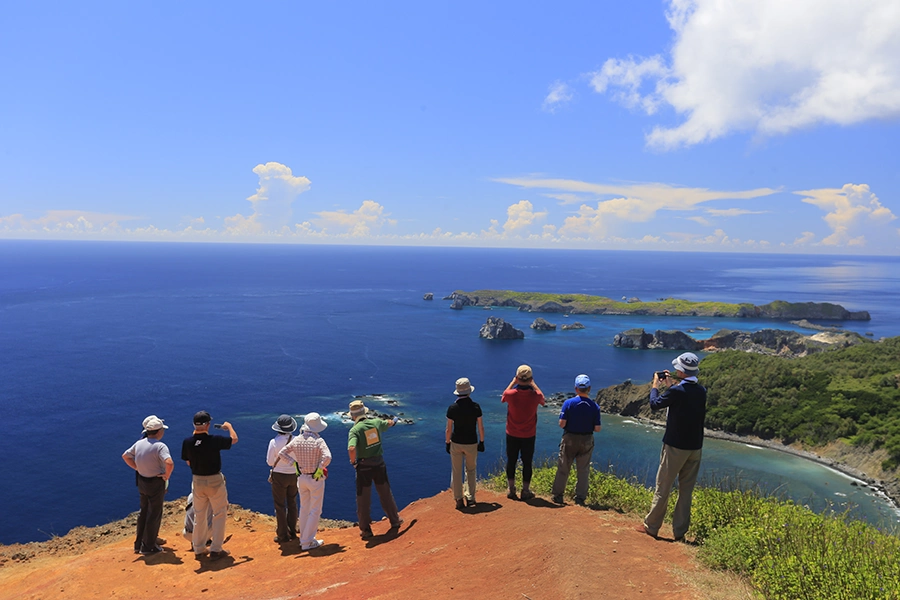 Floating in the Pacific Ocean 1,000 km south of Tokyo are the Ogasawara Islands. Having never been part of the continent, the various flora and fauna here have evolved in isolation. Recognized in 2011 as a UNESCO World Natural Heritage Site, this island group is a true treasure trove of unspoiled nature. The stunning seascape, known as “Bonin Blue,” is home to vibrant coral reefs as well as large fish and dolphins, making it ideal for snorkeling, diving, or swimming with dolphins. On land, enjoy hiking trails that wind through landscapes rich in unique native plant and animal species.
Floating in the Pacific Ocean 1,000 km south of Tokyo are the Ogasawara Islands. Having never been part of the continent, the various flora and fauna here have evolved in isolation. Recognized in 2011 as a UNESCO World Natural Heritage Site, this island group is a true treasure trove of unspoiled nature. The stunning seascape, known as “Bonin Blue,” is home to vibrant coral reefs as well as large fish and dolphins, making it ideal for snorkeling, diving, or swimming with dolphins. On land, enjoy hiking trails that wind through landscapes rich in unique native plant and animal species.
There is no airport on the Ogasawara Islands, so access is typically via options like the regular ferry “Ogasawara Maru,” which departs from Takeshiba Pier and takes about 24 hours. When visiting, be sure to book the round-trip ferry, accommodation, and activities in advance.
TOKYO CHICHIJIMA ISLAND
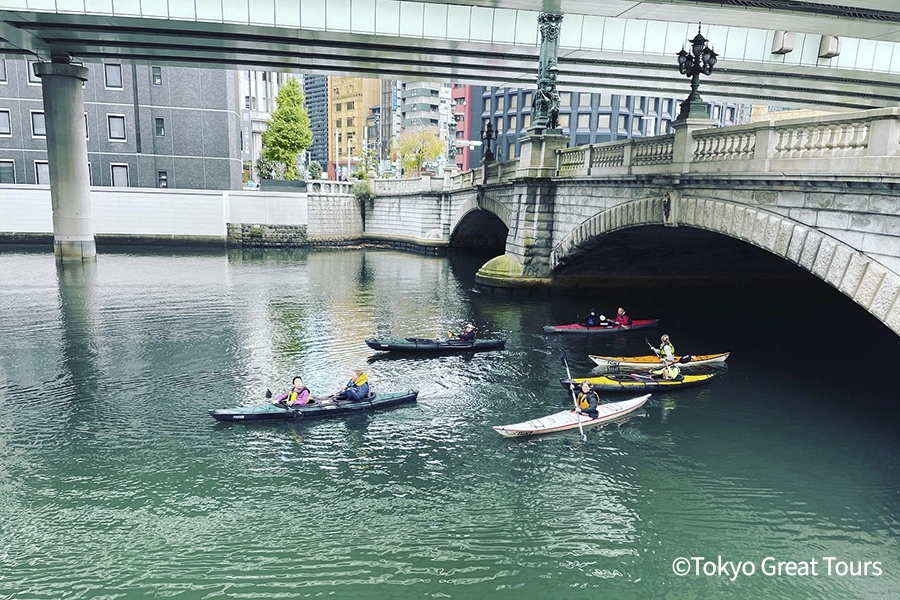
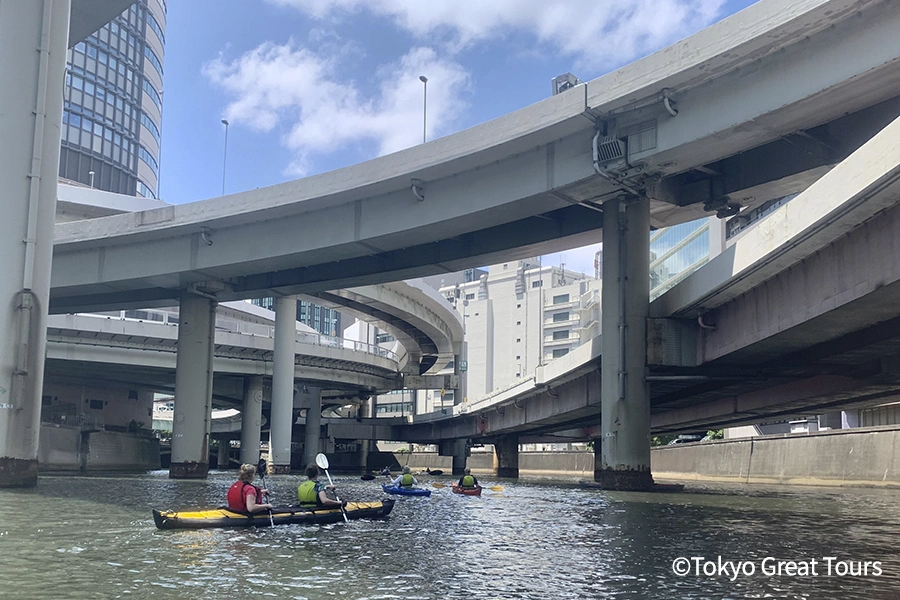
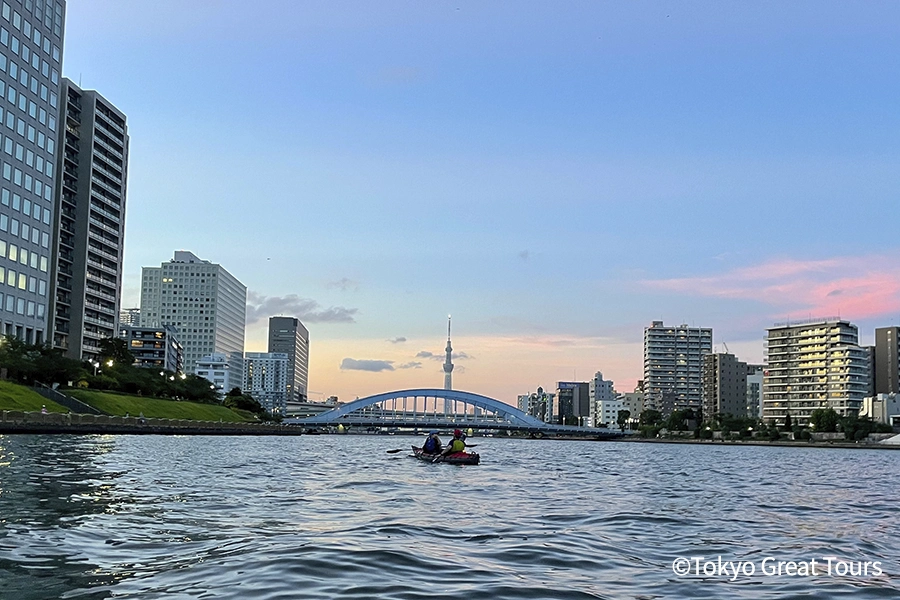
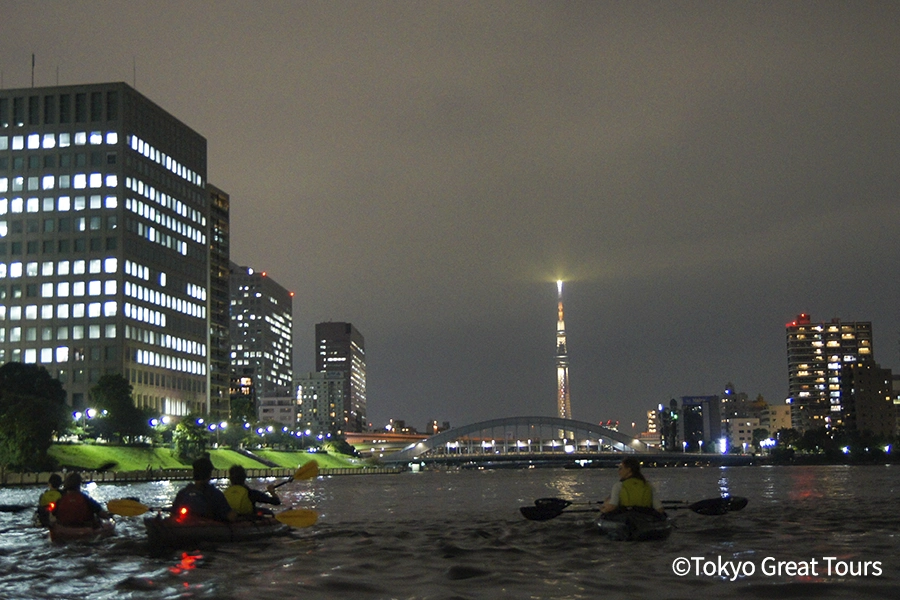 One activity easy to join even in the city is drifting through the canals in a kayak. Follow the guides of the “TOKYO GREAT KAYAKING TOUR” to see famous spots from the water including Nihonbashi and TOKYO SKYTREE. Passing water buses and yakatabune (traditional roofed pleasure boats) kick up waves on the Sumida River, adding some thrills to your experience. The tour starts and ends at the easily accessible Kayabacho, about 1.4 km from Tokyo Station.
One activity easy to join even in the city is drifting through the canals in a kayak. Follow the guides of the “TOKYO GREAT KAYAKING TOUR” to see famous spots from the water including Nihonbashi and TOKYO SKYTREE. Passing water buses and yakatabune (traditional roofed pleasure boats) kick up waves on the Sumida River, adding some thrills to your experience. The tour starts and ends at the easily accessible Kayabacho, about 1.4 km from Tokyo Station.
KAYAKING IN TOKYO
Still think of Tokyo as nothing but a big city? From the forests of Meiji Jingu Shrine to the Todoroki Valley, even the heart of Tokyo is rich in lushly green areas perfect for “shinrin-yoku,” or forest bathing—a Japanese practice of relaxing in nature to refresh the mind and body. Between the bustling attractions, take time to explore Tokyo’s natural side.
Climb Mt. Takao





Takao Tozan Railway official site (Multiple languages available)
Hop on a bike and enjoy the river at Okutama





The Tama River runs through the area, making a wealth of water-based adventures possible, including rafting, stream climbing, or drifting on a SUP on a dam lake. Rafting Winds offers a “combo tour” to bundle two activities for one full day of nonstop fun in the pristine waters.
Rafting winds




TREKKLING
English-speaking staff are available at both locations, ensuring smooth communication.
Trekking on Oshima




There are three ways to reach Oshima from Tokyo. You can fly from Chofu Airport in about 30 minutes. If traveling by sea, you can choose either a 1 hour 45-minute jetfoil ride from Takeshiba Pier, or an 8-hour overnight journey on a large passenger ferry.
Oshima Navi (Japanese site only)
Enjoy the unspoiled natural treasures of the Ogasawara Islands





There is no airport on the Ogasawara Islands, so access is typically via options like the regular ferry “Ogasawara Maru,” which departs from Takeshiba Pier and takes about 24 hours. When visiting, be sure to book the round-trip ferry, accommodation, and activities in advance.
TOKYO CHICHIJIMA ISLAND
Kayaking in the city canals




KAYAKING IN TOKYO
Still think of Tokyo as nothing but a big city? From the forests of Meiji Jingu Shrine to the Todoroki Valley, even the heart of Tokyo is rich in lushly green areas perfect for “shinrin-yoku,” or forest bathing—a Japanese practice of relaxing in nature to refresh the mind and body. Between the bustling attractions, take time to explore Tokyo’s natural side.



